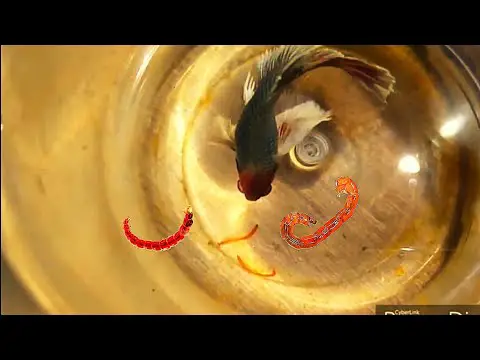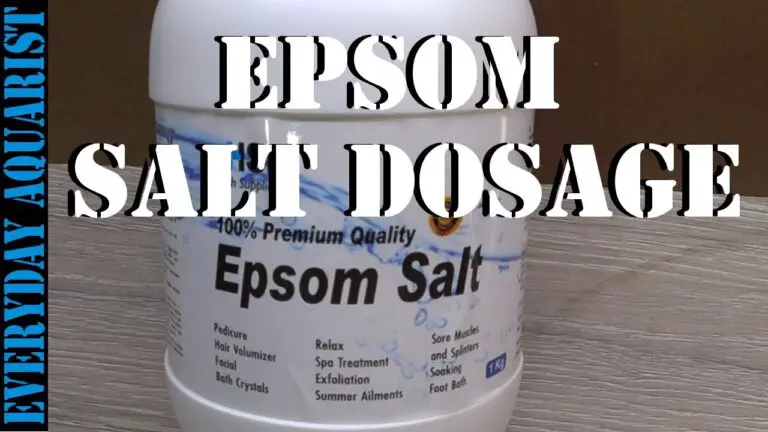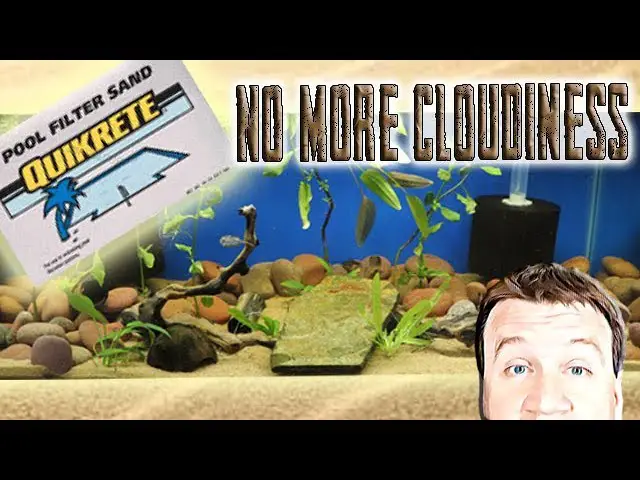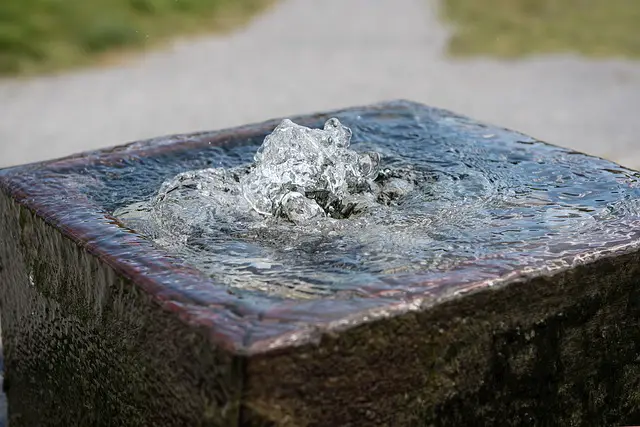Mangrove Aquarium Plants
Mangrove aquarium plants are one of the most beautiful and exotic types of plants that you can add to your saltwater aquarium. They are also one of the most difficult to care for. Mangroves are native to the brackish waters of mangrove swamps and estuaries.
In their natural habitat, they are constantly exposed to changing tides and salinity levels. In order to thrive in a captive environment, they need to be provided with similar conditions.
One of the best things you can do for your aquarium is to add mangrove plants. Not only do they look great, but they also provide many benefits for your fish and other aquatic life. Here are just a few of the reasons why you should consider adding mangroves to your aquarium:
1. Mangroves help to stabilize the water quality in your aquarium.2. They provide shelter and hiding places for fish and other aquatic creatures.3. Mangroves help to filter out excess nutrients from the water, which can lead to better water quality overall.
4. The roots of mangrove plants act as natural biofilters, helping to remove harmful toxins from the water.

Credit: reefbuilders.com
Can You Grow Mangrove in an Aquarium?
Mangroves are a type of tree that typically grows in coastal areas. They are known for their ability to tolerate salt water and their extensive root systems, which help to protect coastlines from erosion. While mangroves can be difficult to grow in an aquarium setting, it is possible with the right conditions and care.
To start, you will need a large aquarium with plenty of space for the roots to spread out. The water should be shallow – no more than two feet deep – and warm, around 80 degrees Fahrenheit. You will also need to add salt to the water, using a ratio of one tablespoon per gallon.
Mangroves prefer bright light, so provide them with plenty of daylight or artificial lighting designed for aquatic plants. The trees will also need regular fertilization; look for products that are high in nitrogen and potassium. Mangroves can be sensitive to chemicals, so make sure your aquarium is well-filtered and use only gentle cleaners if necessary.
With proper care, your mangrove tree can thrive in an aquarium environment – just be prepared for it to take some time and patience!
How Do You Plant a Mangrove in an Aquarium?
If you’re interested in adding a mangrove to your aquarium, there are a few things you’ll need to do to ensure success. First, it’s important to choose the right species of mangrove for your particular setup. Some common options include red mangroves (Rhizophora mangle), black mangroves (Avicennia germinans), and white mangroves (Laguncularia racemosa).
Once you’ve selected your plant, you’ll need to prepare the aquarium. Mangroves prefer brackish or saltwater conditions, so if your aquarium is fresh water, you’ll need to add some marine salt mix to raise the salinity. You’ll also need to provide plenty of aeration and filtration, as well as ample lighting.
Once your aquarium is ready, it’s time to plant the mangrove. You can either purchase a small potted plant from a nursery or propagate your own from seedlings or cuttings. If you’re propagating from seedlings or cuttings, it’s important to keep them moist until they’re ready to be planted.
To plant, simply dig a small hole in the substrate and gently place the roots into the hole. Be sure not fill the hole too tightly with substrate, as this can damage the roots. Once planted, give the mangrove some time acclimate before adding any fish or other animals to the tank.
How Fast Do Mangroves Grow in Aquarium?
Mangroves are a type of tree that is commonly found in tropical and subtropical regions. They are known for their ability to thrive in salty or brackish water, and they are often used as a natural way to help filter water in aquariums. But how fast do these trees grow?
It depends on the species of mangrove, but most will grow relatively quickly in an aquarium setting. Some species can even grow up to 1 foot per year! Mangroves are typically very easy to care for and only require basic maintenance, so if you’re looking for a plant that will add some interest to your tank and won’t be too much work, mangroves might be a good option.
Can Mangrove Plants Grow in Freshwater?
Mangrove plants are typically found in tropical and subtropical climates, where they line the coastlines and provide critical habitat and protection from storms. While most mangroves prefer brackish or salt water, some species can grow in freshwater.Rhizophora mangle, for example, is a common type of red mangrove that can tolerate a wide range of salinity levels.
It is often found along rivers in estuarine areas, where fresh water meets salt water. Other mangrove species that can grow in freshwater include Avicennia germinans and Laguncularia racemosa.While these plants are adaptable to different salinity levels, they still require plenty of sunlight and moist soil to thrive.
In freshwater habitats, mangroves may not be as abundant as they are in saltier environments since they compete with other plants for resources. However, they still play an important role in providing habitat for wildlife and stabilizing shorelines.
How To Grow Mangrove Tree In Your Aquarium
Mangrove in Freshwater
Mangroves are a family of trees that grow in the coastal regions of the tropics and subtropics. These trees have long, thick roots that allow them to anchor themselves in the soft, muddy ground. Mangroves are often found in brackish water – a mix of fresh and salt water.
The mangrove tree is an important part of the ecosystem in these areas. The trees provide shelter and food for many animals, including fish, crabs, and birds. The roots help to filter out pollutants from the water and prevent erosion.
Despite their importance, mangroves are under threat from development and pollution. In some areas, they have been cleared to make way for shrimp farms or other coastal projects. This has had a devastating effect on local wildlife and has contributed to the decline of many species.
There is still hope for these valuable ecosystems.
Mangrove Aquarium Fish
Aquarium fish keeping is a popular hobby enjoyed by many people around the world. Mangrove aquarium fish are some of the most beautiful and unique fish available to hobbyists.Mangrove aquarium fish come from the brackish waters of mangrove forests.
These habitats are found in tropical and subtropical regions around the world. The water in these areas is a mix of fresh and salt water, which provides an ideal environment for many different species of fish to thrive.Mangroves are important ecosystems that provide habitat and food for a variety of animals, including birds, reptiles, amphibians, and mammals.
They also help to protect coastlines from erosion and storm damage.
Mangrove Plants for Sale
If you’re looking for mangrove plants for sale, you’ve come to the right place. Mangroves are an essential part of the coastal ecosystem and play a vital role in protecting shorelines from erosion and storm damage. They also provide habitat for fish, crabs, and other marine life.
Mangroves are available for purchase through many nurseries and online retailers. When selecting a mangrove plant, it’s important to choose one that is native to your area. This will ensure that the plant is well-suited to your climate and soil conditions.
Once you’ve chosen a mangrove plant, be sure to provide it with plenty of water and sunlight. Mangroves prefer sandy or muddy soils and can tolerate saltwater conditions. With proper care, your mangrove plant will thrive and provide years of beauty and benefits to your landscape.
How to Grow Mangroves Indoors
Mangroves are a type of tree that is adapted to living in salt water. They are an important part of the ecosystem in many coastal areas, providing habitat for fish and other animals. Mangroves also help to protect against erosion and storm surge.
Although they are typically found in tropical and subtropical regions, it is possible to grow mangroves indoors. There are a few things to keep in mind when growing mangroves indoors:1. Choose a pot that is large enough for the tree to grow.
Mangroves can get quite large, so make sure the pot can accommodate the tree’s growth.
2. Use a soil mix that is designed for mangroves or another type of salt-tolerant plant. Regular potting soil will not work as it will quickly become too salty for the plant.
3 . Place the pot in an area where it will receive bright, indirect light. Mangroves need lots of light but direct sunlight can be too intense, especially if the leaves are wet (which they often are due to their humid environment).
4 . Keep the soil moist but not soggy by watering with distilled or rainwater. Again, because of their adaptations to living in salt water, regular tap water will make the soil too salty for the plant over time .
5 . If you live in a region with cold winters, you’ll need to bring your indoor mangrove inside before temperatures drop below 50 degrees Fahrenheit/10 degrees Celsius .With a little care, you can enjoy watching your own miniature mangrove forest grow right inside your home!
How to Grow Mangroves in Freshwater
Mangroves are a type of tree that is adapted to living in coastal habitats. They are able to tolerate salty water and high levels of humidity. Mangroves are an important part of the ecosystem in many coastal areas.
They provide shelter and food for animals, and help to protect against erosion.Growing mangroves in freshwater is possible, but it requires some special care. Mangroves need brackish water to thrive, so they won’t be able to survive in pure freshwater environments.
If you’re interested in growing mangroves, you’ll need to create a habitat that has both fresh and salt water. You can do this by mixing saltwater and freshwater together, or by keeping them in separate tanks and connected with a pump.Once you have the right environment set up, you can choose from a variety of different mangrove species to grow.
Some common choices include red mangroves (Rhizophora mangle), black mangroves (Avicennia germinans), and white mangroves (Laguncularia racemosa). Each species has its own unique appearance and growth requirements, so be sure to do some research before making your final decision.Once you’ve selected your desired species, it’s time to plant!
Mangrove seeds can be purchased online or at local nurseries. Planting instructions will vary depending on the type of seed you’re using, so make sure to read the packaging carefully before getting started. Once your seedlings are planted, they’ll need regular watering and fertilization just like any other tree.
With proper care, your mangrove trees should start growing quickly and provide years of enjoyment!
Growing Mangroves from Cuttings
Mangroves are an essential part of the coastal ecosystem, providing critical habitat for a wide variety of fish, birds, and other animals. They also protect shorelines from storms and erosion. Unfortunately, mangrove forests around the world are being lost at an alarming rate.
One way to help restore these important habitats is by growing mangroves from cuttings. Mangrove cuttings can be taken from existing trees or purchased from nurseries. The best time to take cuttings is during the wet season when the plants are actively growing.
Before taking any cuttings, it’s important to get permission from the landowner or manager. Once you have permission, follow these steps:1) Using a sharp knife or pruning shears, remove a branch that is at least 1 inch in diameter and 6-12 inches long.
Make sure to make your cuts cleanly and avoid damaging the bark.2) Strip away any leaves from the bottom half of the cutting. Leaves on the top half of the cutting can be left intact.
3) Place the cutting in a bucket or container filled with water mixed with a rooting hormone powder or liquid (available at most garden centers). It’s important to use fresh water because saltwater will damage the roots as they grow. Allow the cutting to soak for 24 hours before planting.
Can You Grow Mangroves in Freshwater
Mangroves are typically found in tropical and subtropical coastal areas, where they play an important role in protecting shorelines from erosion and storm damage. But did you know that mangroves can also grow in freshwater habitats?In fact, there are several species of mangrove that can thrive in freshwater environments.
These “freshwater mangroves” are found throughout the world, from Africa to Asia to the Americas.One of the most common freshwater mangrove species is the red mangrove (Rhizophora mangle). Red mangroves can tolerate a wide range of salinity levels, making them well-suited for life in both brackish and freshwater habitats.
Red mangroves are often found growing along rivers and streams in tropical regions. They help stabilize riverbanks and protect against flooding. In addition, their roots filter out pollutants from the water, improving water quality for other plants and animals.
If you’re interested in growing freshwater mangroves, there are a few things to keep in mind. First, it’s important to choose a site with plenty of sunlight and good drainage. Mangroves prefer soil that is sandy or muddy – not too dense or too light.
Once you’ve selected a suitable location, you can purchase red mangrove seedlings from a nursery or online retailer. When planting, be sure to bury the roots up to the first set of leaves (called “prop roots”). This will help your seedling establish itself quickly and start growing strong!
Mangrove Plants for Sale near Me
If you’re looking for mangrove plants for sale near you, there are a few things to keep in mind. Mangroves are salt-tolerant trees and shrubs that grow in coastal regions around the world. They thrive in areas with high tides and salty soils.
There are over 80 species of mangroves, but only a handful are commonly found in nurseries and garden centers. The most popular varieties include red mangroves (Rhizophora mangle), black mangroves (Avicennia germinans), and white mangroves (Laguncularia racemosa).When shopping for mangrove plants, it’s important to choose a variety that is suited to your region’s climate and soil conditions.
Mangroves can be difficult to grow from seed, so it’s best to buy young plants from a reputable nursery.Once you’ve chosen the right plant for your area, be sure to provide it with plenty of sunlight and water. Mangroves prefer wet soils, so be sure to water them regularly during dry periods.
With proper care, your mangrove will thrive for years to come!
Conclusion
Mangrove aquarium plants are a great addition to any freshwater or saltwater aquarium. They provide shelter and food for many fish and invertebrates, and help to keep the water clean and oxygenated. Mangroves are easy to care for and can be kept in a wide range of water conditions.




